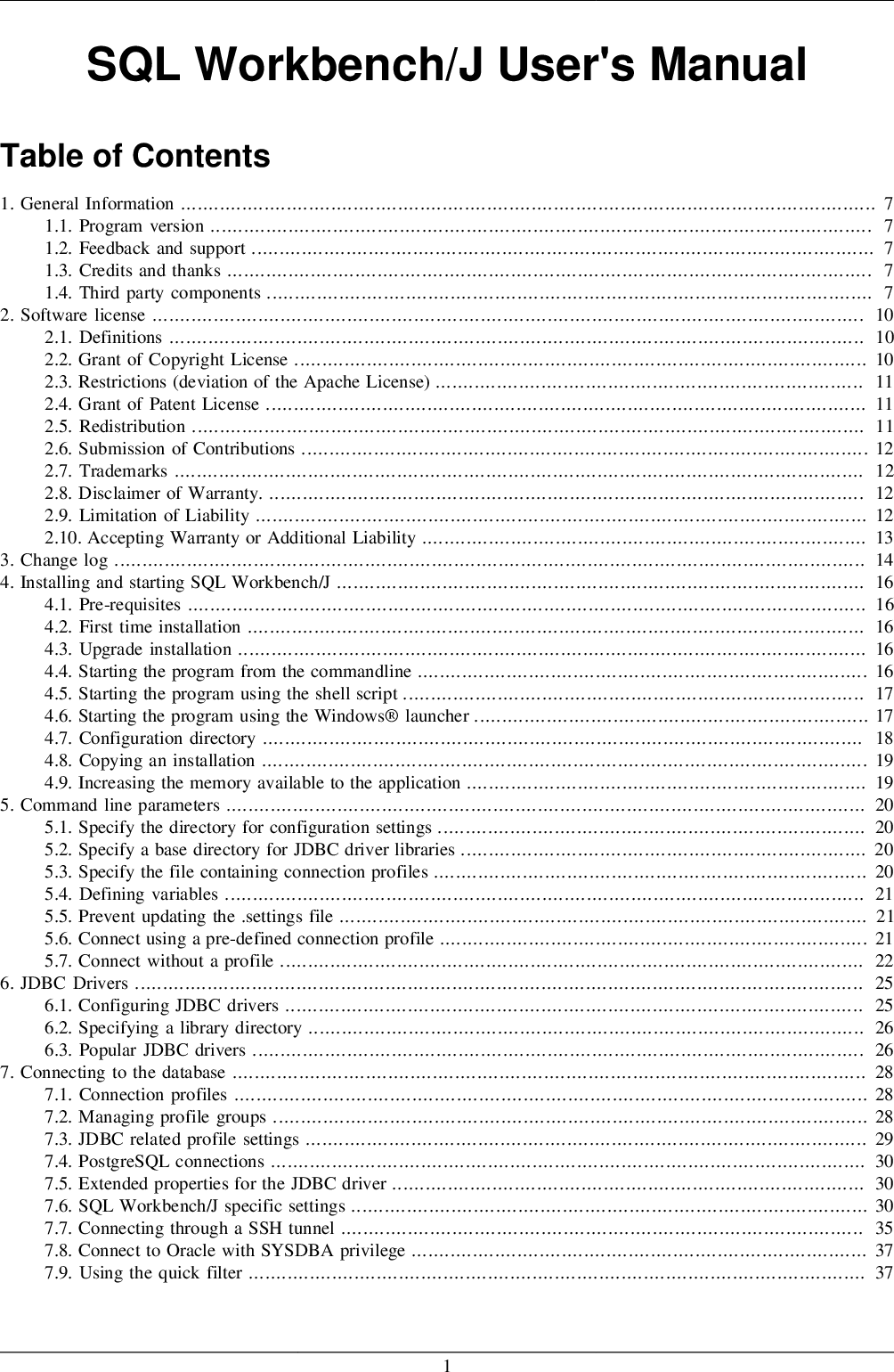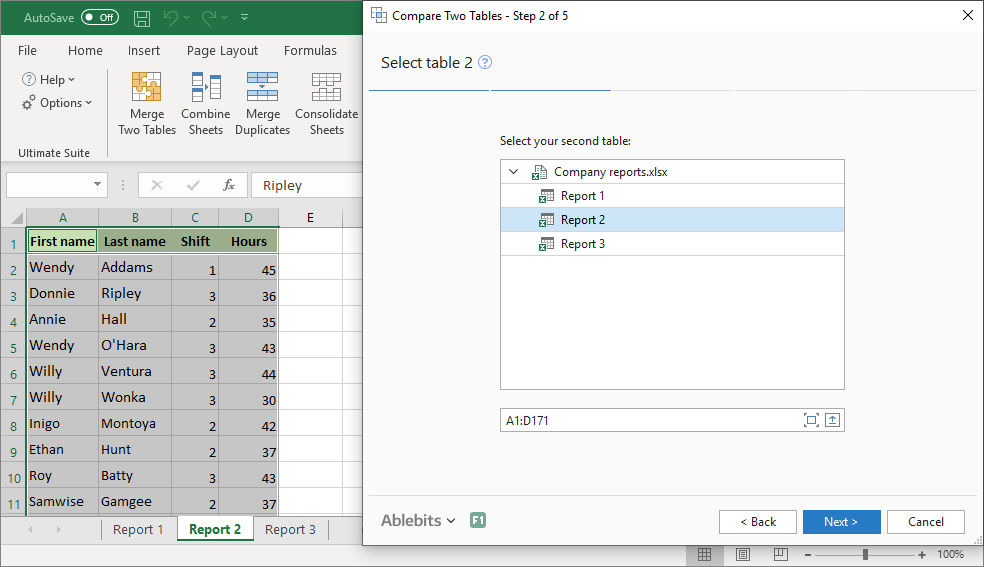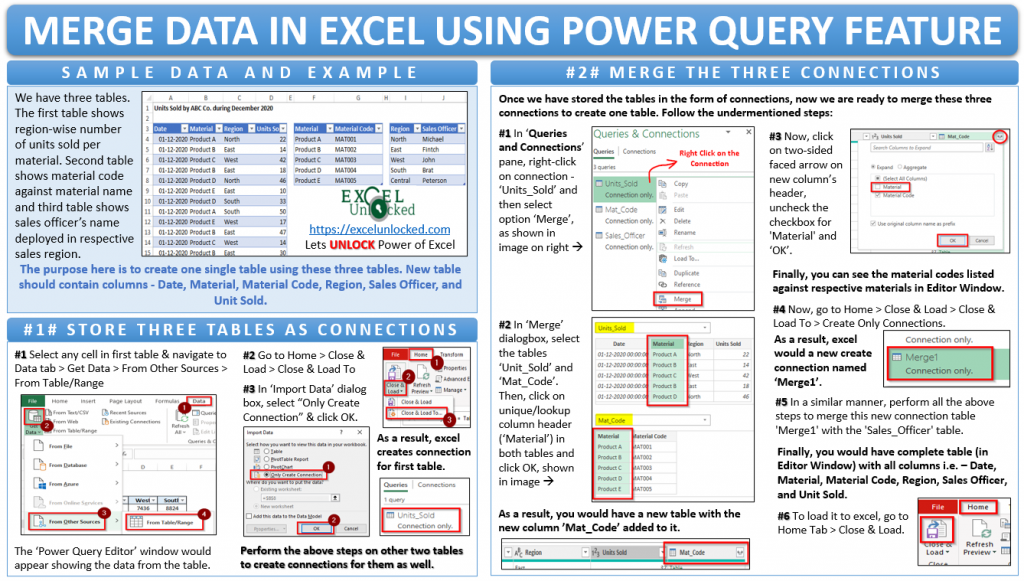Adding the DISTINCT keyword to a SELECT query causes it to return only unique values for the specified column list so that duplicate rows are removed from the result set. Since DISTINCT operates on all of the fields in SELECT's column list, it can't be applied to an individual field that are part of a larger group. That being said, there are ways to remove duplicate values from one column, while ignoring other columns. We'll be taking a look at a couple of those here today.
The DISTINCT clause be used with a list of columns to display all unique combinations of values stored in the table. In our PETS table, we noticed that we had two pet types and two pet genders. Therefore, four unique records were generated in the output windows. This result is a cross product of the number of distinct values in each column, 2 x 2.
When used with columns, the DISTINCT clause counts a NULL value as a valid combination. If you are interested, I enclosed an example for the Shipping Department of the Adventures Works Company that finds DISTINCT shipping addresses by CITY, STATE and COUNTRY. This might be helpful when brokering deals with shipping companies to remote locations. If you want to select distinct values of some columns in the select list, you should use the GROUP BY clause.
In case a column contains multiple NULL values, DISTINCT will keep only one NULL in the result set. We will use the authors table from the sample database for the demonstration. The DISTINCT clause is used in the SELECT statement to remove duplicate rows from a result set.
The DISTINCT clause keeps one row for each group of duplicates. The DISTINCTclause can be applied to one or more columns in the select list of the SELECT statement. When looking at two different T-SQL statements that return the same result set, a developer should look at both the estimated and/or actual execution plans. One might be surprised that the two queries execute the same. Since the temporary table has not primary key, it is considered a heap. By default, a full table scan will be used to read up the data.
A sort distinct operator takes the 6 unique values as input and comes up with 4 unique combinations as output. The query returns the unique combination of bcolor and fcolor from the distinct_demotable. Notice that the distinct_demo table has two rows with red value in bothbcolor andfcolor columns. When we applied the DISTINCTto both columns, one row was removed from the result set because it is the duplicate.
As with the traditional method of equality joins, a non-equality join can be performed in a WHERE clause. In addition, the JOIN keyword can be used with the ON clause to specify relevant columns for the join. The query returns only distinct values in the specified column.
In other words, it removes the duplicate values in the column from the result set. You may also specify two or more columns as using the SELECT – DISTINCT clause. In the above example, the query returns the unique values that are in the category_id column. We see by the first row in the result set, NULL is an exceptional value which is returned by the DISTINCT clause. The distinct keyword is used with select keyword in conjunction. It is helpful when we avoid duplicate values present in the specific columns/tables.
The unique values are fetched when we use the distinct keyword. The related tables of a large database are linked through the use of foreign and primary keys or what are often referred to as common columns. The ability to join tables will enable you to add more meaning to the result table that is produced. For 'n' number tables to be joined in a query, minimum (n-1) join conditions are necessary.
Based on the join conditions, Oracle combines the matching pair of rows and displays the one which satisfies the join condition. The DISTINCT clause is used in a SELECT statement to filter duplicate rows in the result set. It ensures that rows returned are unique for the column or columns specified in the SELECT clause. The real problem in SQL is that the SELECT attribute list is not a super key for the result set.
Look again very carefully at the relation scheme to understand why this is true. Any time that this happens, we can eliminate the duplicate rows by including the DISTINCT keyword in the SELECT clause. While making this revision, we'll also list the product names in alphabetical order. Thanks, I found this similar code, however it's returning 'A table of multiple values was supplied where a single value was expected.' which is basically what I'm trying to do. Combining multiple columns with duplicate values into one column with distinct values. The TimeWindow field is the datetime value from last week for the historical data and today for the currentdata, but the date has been stripped out of the datetime values.
Because both let statements summarised their data by bin we should be able to use the TimeWindow field as the join key because they should all be in distinct 5 minute intervals. The additional Computer field used as a join key is needed because there are lots of different computers in the results. If we join based on TimeWindow alone then the results may be mismatched because there are lots of different computer names in the historical and current temporary tables. The DISTINCT keyword appears after the SELECT keyword but before any column or expression in the select list. The query above returns distinct values in the column_name from the table_name. MySQL DISTINCT with multiple columns You can use the DISTINCT clause with more than one column.
In this case, MySQL uses the combination of values in these columns to determine the uniqueness of the row in the result set. Now the task was to write a code which will remove the duplicates value from both the table and present the unique values in a single column. Initially I tried to write this query with some complex logic in a single SELECT statement.
However, as I had another meeting coming up, I quickly wrote a code where I have combined both the table's unique data with UNION. Distinct command in SQL is used along with the Select command, in order to retrieve only distinct or dissimilar values from a table. The UNION keyword will return unique records on the result list.
When specifying ALL will keep duplicates on the result set, which the OP don't want. It then returns the number of product_version values in records with the specific product_key value. In this tutorial, you have learned how to use the Db2 SELECT DISTINCT to remove duplicate rows in the result set of a query.
Use the MySQL DISTINCT clause to remove duplicate rows from the result set returned by the SELECT clause. If we add PET BREED to the list of columns, then all six, records are returned. The fact is that each record represents a unique name of animal breeding.
Distinct is used to find unique/distinct records where as a group by is used to group a selected set of rows into summary rows by one or more columns or an expression. The group by gives the same result as of distinct when no aggregate function is present. This query returns the number of distinct values of date_key in all records with the specific distinct product_key value.
DISTINCT checks only the fields listed in the SQL string and then eliminates the duplicate rows. Now you can check for duplicates in MySQL data in one or multiple tables and understand the INNER JOIN function. Make sure you created the tables correctly and that you select the right columns. This DISTINCT clause example would return each unique site_name and server_name combination from the sites table. In this case, the DISTINCT applies to each field listed after the DISTINCT keyword, and therefore returns distinct combinations. The results are then sorted in ascending order by site_name and then descending_order by server_name.
In this syntax, you specify one or more columns that you want to select distinct values after the SELECT DISTINCT keywords. It's not the same doing a select distinct at the beginning because you are wasting all the calculated rows from the result. You can use CTE to get the distinct values of the second table, and then join that with the first table. You also need to get the distinct values based on LastName column.
Generally, it's best practice to put unique constraints on a table to prevent duplicate rows. This tutorial will teach you how to find these duplicate rows. With GROUP BY and HAVING, you can select distinct values based on group of columns. Where having can be used to find duplicate values also. DISTINCT is used to remove duplicate rows from the SELECT query and only display one unique row from result set.
In this tutorial, you have learned how to use PostgreSQL SELECT DISTINCT statement to remove duplicate rows returned by a query. Some of the tables that I was joining had one to many relationships with rows in other tables. That meant that when my result set was created, each of those many results got returned as its own unique row.
This function takes two variables, one called days which has a datatype of timespan and one called mode which has a datatype of string. The mode variable has a default value of "end" for no other purpose apart from to show that you can assign default values to variables! What the function does is take a timespan value and count back the number of days in the timespan value from today's date to get the day we're interested in. It then gets either the start of the day or the end of that day based on the value of the mode parameter; if mode is equal to "start" then it will get the start of the day. If it's not equal to "start" it will get the end of the day.
The toscalar() function ensures that the result being returned is a single value rather than a table containing a single value. This query selects each distinct date_key value and counts the number of distinct product_key values for all records with the specific product_key value. It then sums the qty_in_stock values in all records with the specific product_key value and groups the results by date_key.
Inner joins are used to retrieve data that has been stored across multiple tables. As discussed earlier, an inner join begins its logical processing phase as a Cartesian product that is then filtered to remove any rows that don't match the predicate. In other guides, you have learned how to write basic SQL queries to retrieve data from a table. In real-life applications, you would need to fetch data from multiple tables to achieve your goals.
In this guide, you will learn how to query data from multiple tables using joins. By default, SQL Server Count Function uses All keyword. It means that SQL Server counts all records in a table. It also includes the rows having duplicate values as well. Today, we are going to re-use the IaaS and PaaS databases that we setup in aprior tip as our lab environment.
Before we craft queries against the Adventure Works sample database, I will show you how to create a simple dataset in TEMPDB that can be used to test sample queries. One appealing fact about a simple dataset is the ability to see the results of a query given a limited number of rows. I have used similar tables in the past when posting answers to questions on Stack Overflow. The complete set of Transact SQL examples is enclosed at the end of the article. The subquery in the preceding example returns a row for every customer who has made at least one purchase. The outer query returns the first and last names of the customers who made the purchases that the SALES table records.
In this post, we are going to see how to select distinct values from SQL queries/statements. One of the easiest ways to select distinct values is using the DISTINCT keyword. You can select distinct values for one or more columns.
The reason for the duplicates is that the SELECT clause simply eliminated the unwanted columns from the result set; it left all of the rows that were picked by the WHERE clause. In this tutorial, you have learned how to use the SQL Server SELECT DISTINCT clause to retrieve the distinct values in a specified list of columns. Now, the query returns a distinct value for each group of duplicates. In other words, it removed all duplicate cities from the result set.
This is our table and we will apply DISTINCT command to this table. Now the distinct query can be applied using two columns. Another use of the let statement is to create a temporary table.
I'm going to add my user-defined function to a query that calculates minimum and maximum CPU utilization values from the same weekday last week. To use let in this way, all you have to do is provide a name for the variable , write your query as normal and then put a semicolon on the end of it all. That's very important because the error message you get when it's missing isn't very helpful! Note the user-defined function being used in the second line of the historicaldata query.


























No comments:
Post a Comment
Note: Only a member of this blog may post a comment.